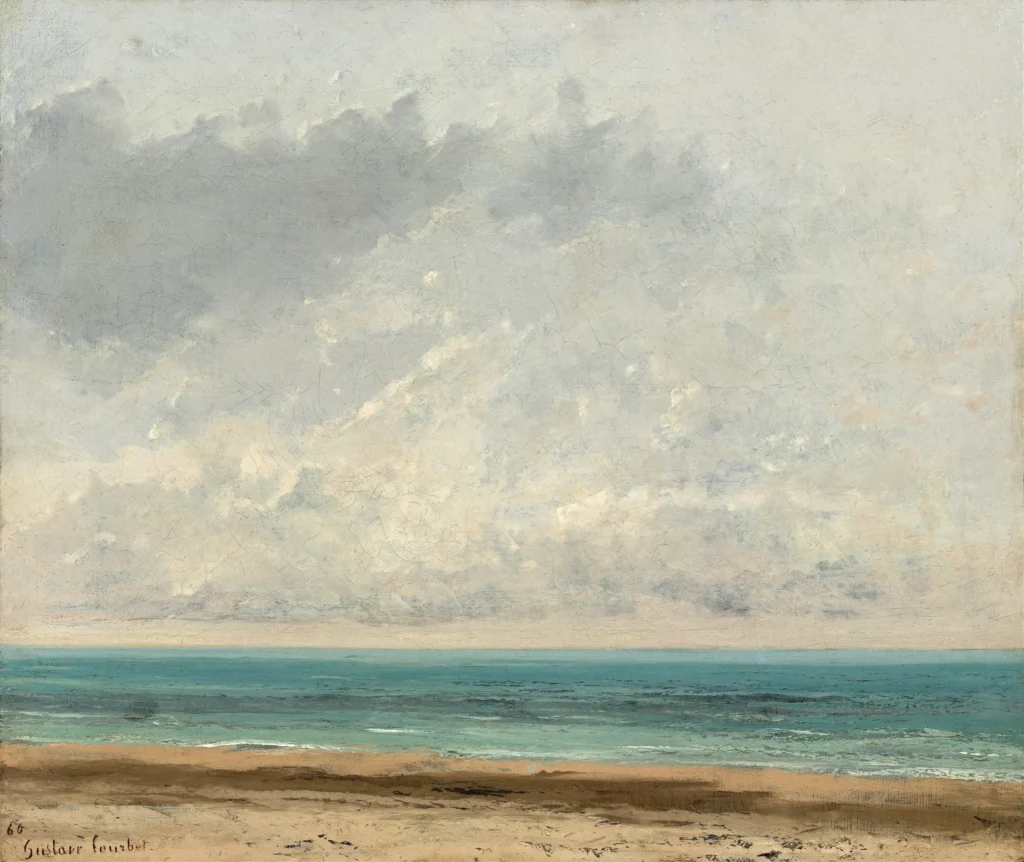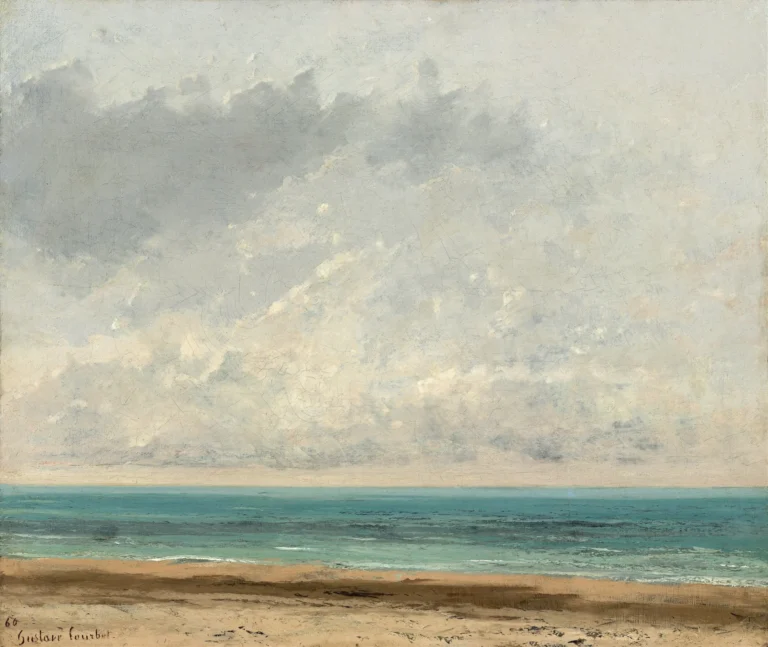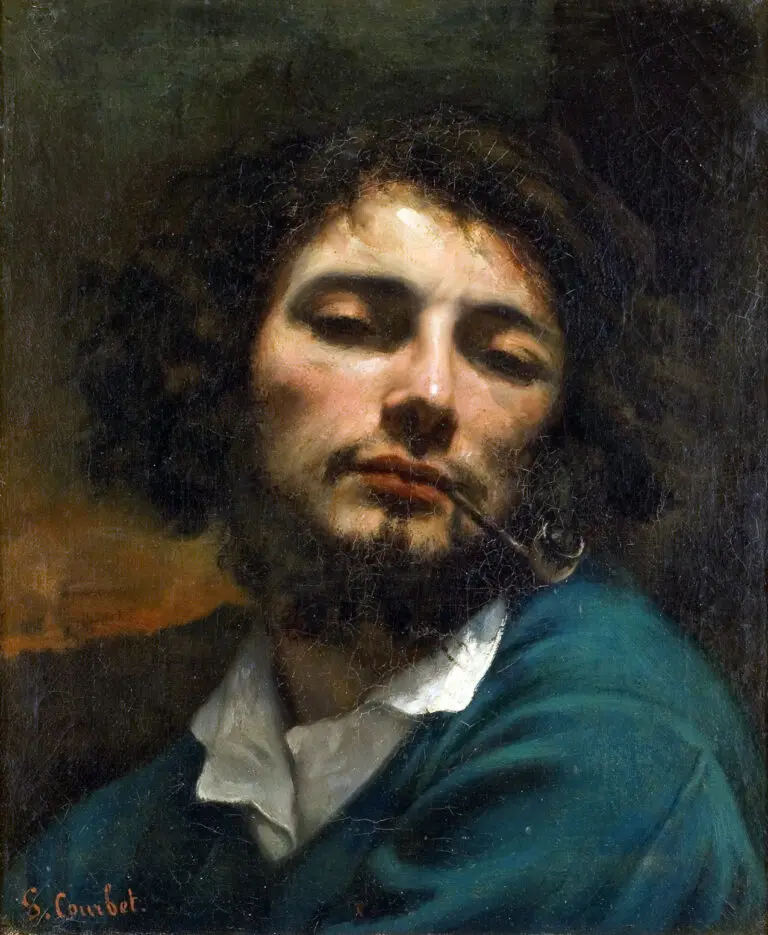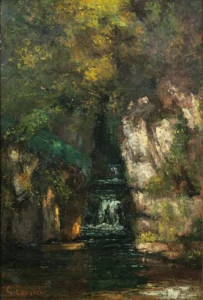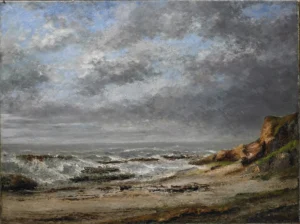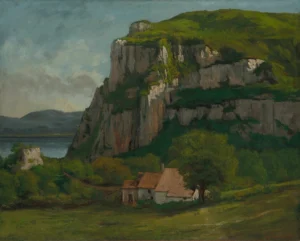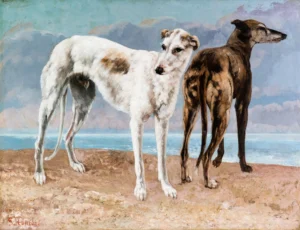Calm Sea (1866)
Calm Sea is a mesmerizing marine painting by Gustave Courbet, created in 1866 during his visit to the picturesque coastal town of Étretat in Normandy. The artwork features a tranquil scene at low tide, with two small boats on the shore against a vast sky, demonstrating Courbet's mastery in capturing the essence of nature through his Realist style. This painting departs from Courbet's usual dynamic waves, highlighting his versatility as an artist.
Year 1866
About the Artwork
The creation of Calm Sea is deeply intertwined with Gustave Courbet's experiences while exploring the coastal landscapes of Normandy. Although some dates suggest the painting might have been finalized in 1869, the consensus places its creation in 1866. Courbet, a pioneer of the Realist movement, sought to depict the world as it is, steering away from romanticized interpretations of nature. This piece reflects a moment of stillness and natural beauty, contrasting his more dynamic works of crashing waves. Calm Sea symbolizes Courbet's dedication to portraying the true essence of the world around him and illustrates his spontaneous technique that exemplifies the irregularities of nature.
Did You Know
Liked what you see? Add it to your collection.
Enjoyed reading? Share it.
... continued
Creation and Location
The painting was executed during Courbet's visit to Étretat, a coastal town in Normandy, although the specific date mentioned in some sources is 1869, it is generally agreed that the work was created in 1866.
Composition
The painting depicts a tranquil scene with the ocean receded at low tide, leaving two small boats on the shore. The composition is characterized by an immense sky dominating the narrow bands of water and sand, which is unusual for Courbet's marine paintings of this period, as they often featured dramatically crashing waves.
Style and Technique
Calm Sea is painted in the Realism style, which was a hallmark of Courbet's work. Realism, as practiced by Courbet, involved a spontaneous and rough handling of paint to portray the irregularities in nature directly, challenging the conventional academic ideas of art.
Dimensions
The painting measures 54.1 x 63.9 cm (21 5/16 x 25 3/16 inches) and is executed in oil on canvas.
Current Location
The Calm Sea is part of the collection at the National Gallery of Art in Washington, D.C., specifically located in the West Building, Main Floor — Gallery 92.




